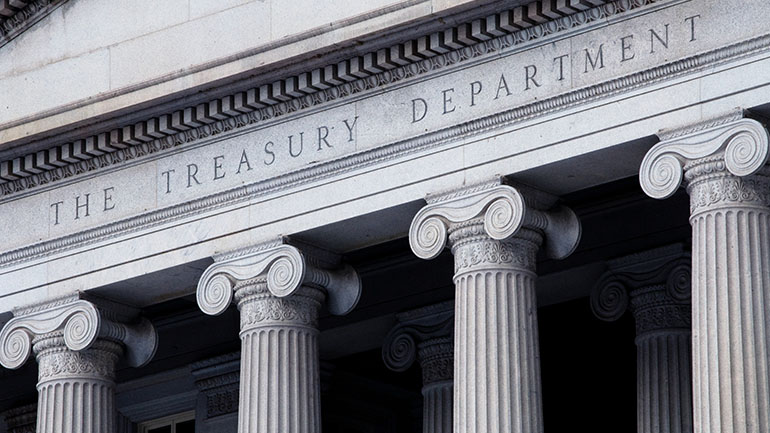U.S. Election: Risky Business
By: Oscar Muñoz, Gennadiy Goldberg, Chris Krueger, Jan Nevruzi, Molly McGown, Mark McCormick
Jul. 29, 2024 - 5 minutes
Former President Trump’s policy platform poses the most meaningful implications for economic projections and represents the most uncertain outcome for markets if there is a Republican sweep in Congress. On the other hand, the Democratic policy platform is a more known quantity and likely to represent fewer surprises for market participants as they are the status-quo — even in the scenario of a Democratic sweep in the November elections.
Given that a Democrat presidency would maintain status quo and not likely to represent any major surprises to markets, we focus below on the macro implications from the key policies under a Trump administration.
- Markets will care about three broad categories — immigration, tariffs, and fiscal policy.
- Immigration should have the largest impact on the economy, followed by the impact of tariffs. While deficits are likely to rise further regardless of who wins the U.S. election, a split government increases the risk of a debt ceiling standoff and a further U.S. credit rating downgrade.
- Unlike his first term, Trump would aim to implement new tariff and immigration policies as soon as he is sworn in. These initiatives would not require Congressional approval.
- While Trump took about a year to formalize new tariffs during his first term (implementing them in January 2018), we believe this time his flagship policy proposals for tariffs and immigration would be executed during the first 100 days of his new administration. This suggests that the first macro impacts are likely to be visible by mid-2025. This would push inflation sharply higher in 2025 and growth lower in 2026.
Key Event Dates in New Presidential Administration
- Dual negative supply-side shocks would place the Fed in a bind. We assume the Fed's initial response would be to stay patient, with policymakers likely postponing any planned rate cuts over H1 2025 as they assess the first effects from Trump's policies. As the initial inflation shock fades away and the negative impact on growth starts to take hold, we expect the Fed to resume cuts rapidly in Q3 2025.
- Markets have already begun to factor in the potential for a Red Wave, with the Treasury curve bear steepening sharply. The curve is likely to continue bear steepening in the event of a Red Wave, but bear steepening could eventually give way to bear flattening.
- It might take a bit more time for the U.S. election to become the key FX driver, but Trump is likely USD bullish. Tariffs could undermine global confidence, supporting the USD through growth, equity, and risk channels.
Potential U.S. Election Outcomes, Policy Focus and Market Reactions
Subscribing clients can read the full report, U.S. Election: Risky Business, via the TD One Portal

















